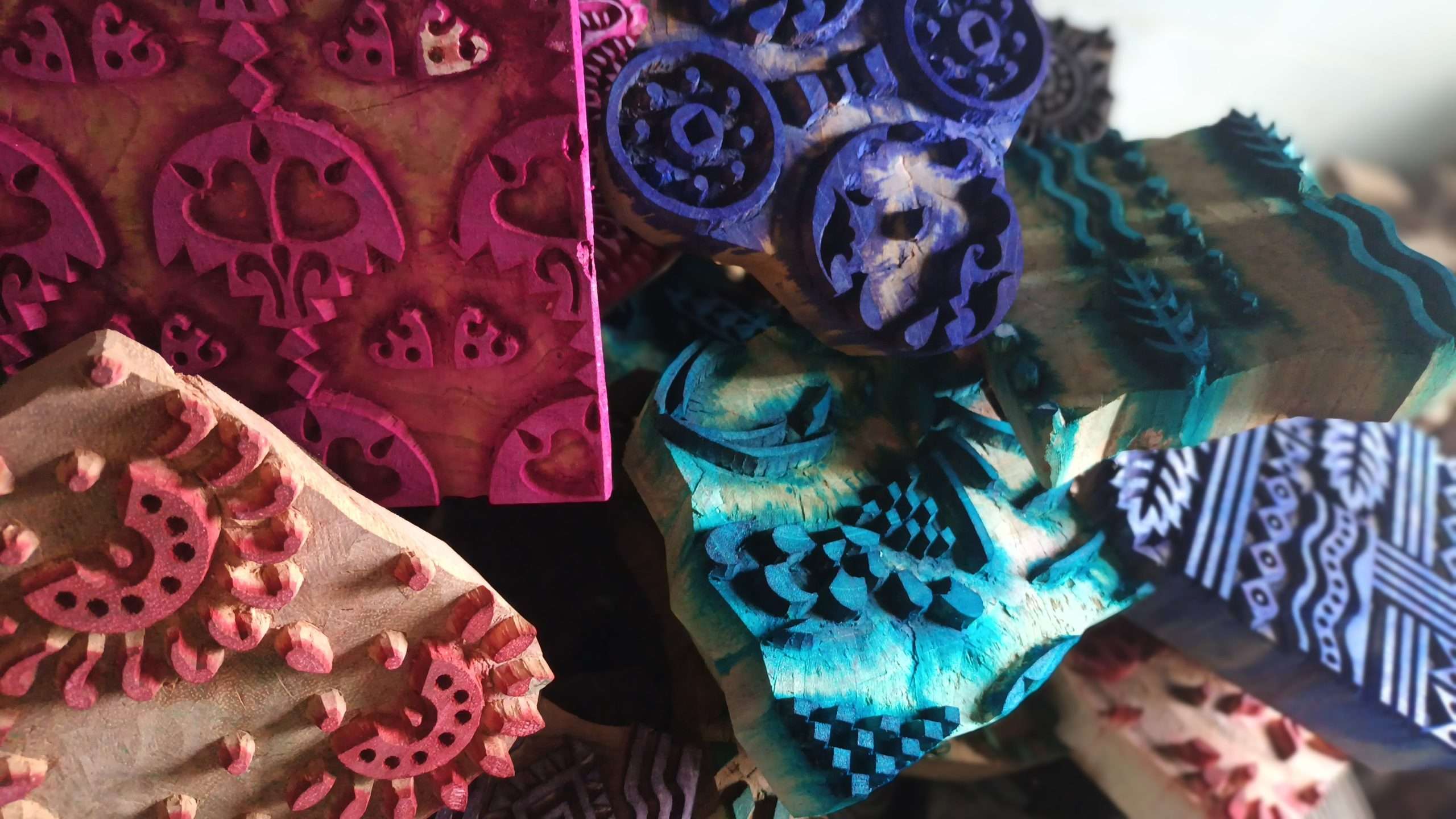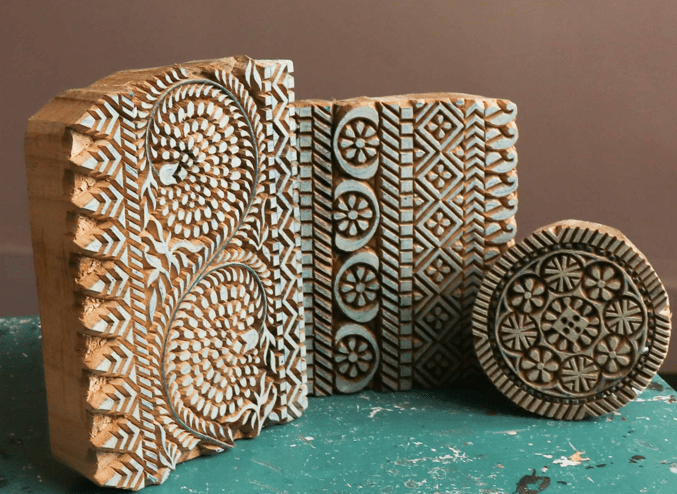What Makes Hand-Block Printing So Special
The art form of hand-block printing requires a great deal of labour and expertise. On wooden blocks, elaborate patterns are painstakingly designed and hand carved by artisans. The carved wooden blocks are then utilised to transfer the design to fabric. Precision, skill, and a thorough understanding of colour schemes and pattern placement are all necessary for the process. Hand-block printing is frequently respected and valued for its craftsmanship and artistry.
Is Block Printing Considered an Eco-Friendly Method?
Hand-block printing is regarded as an eco-friendly printing technique. Like indigo, turmeric, or madder root, the colours used in the process are frequently natural and sourced from plant, vegetable, and mineral sources. Vegetable dyes are biodegradable and do not hurt the environment or pollute water. Additionally, because the printing is done by hand, it uses less energy than mechanised printing methods.
Varieties Of Hand Block Printing :
Hand-block printing encompasses a wide range of varieties, each with its unique characteristics and regional influences.
Some of the prominent varieties of hand-block printing are
- Ajrakh: This Indian textile, which comes from Gujarat and Rajasthan, is renowned for its exquisite geometric and floral patterns. To create rich and bright designs, it often uses natural colours like indigo, madder, and turmeric.
- Bagru: Bagru block printing, which originates in Rajasthan, India, is distinguished by its use of earthy colours and repeated patterns. Dots, geometric patterns, and floral themes are frequently used in the designs. Vegetable dyes and the distinctive resist dyeing method known as Dabu are used during the printing process.
- Kalamkari: The hand-block printing technique known as “Kalamkari,” which translates to “pen craftsmanship,” comes from Andhra Pradesh in India. Intricate designs illustrating legendary tales, scenes from nature, and conventional motifs are produced by combining hand painting and block printing processes. Common natural dyes and stamps include indigo, madder, and pomegranate.
- Batik: This hand-block printing method, which originated in Indonesia but is now used all over the world, is known as batik. Wax is applied to the fabric in certain places to prevent dye from penetrating, creating distinctive patterns and motifs. The final printed fabric is then revealed after the wax has been removed.
- Sanganeri: Block printing, known as Sanganeri, originated in the Indian state of Rajasthan. It is well renowned for its exquisite workmanship and soft floral designs. Sanganeri prints often include colours made from natural dyes, which gives them a softer, pastel appearance.
- Dabu: In Rajasthan, India, a resist printing method called “Dabu” first appeared. It entails coating the fabric with a mud paste composed of clay, gum, and wheat bran prior to block printing. In order to create distinctive patterns and designs, the mud paste serves as a resist agent, keeping the dye from reaching certain places.
These are some of the well-known and varied hand-block printing styles. Hand-block printing is a rich and lively art form with a broad variety of options for individuals who value its beauty and cultural significance. Each region and community has its own distinct style, motifs, and hand-block printing processes.
The Future Of Hand-Block Printing:
Hand-block printing has a promising future since it keeps the integrity of workmanship and the human touch in textile art. To guarantee the originality and individuality of each print, artisans will continue to hand-carve elaborate motifs onto wooden blocks. Advances in block printing techniques will allow for the transfer of more complex and finely detailed designs onto cloth in the future of hand block printing.
The future of hand-block printing will be heavily influenced by sustainability. By using organic materials and vegetable dyes, artisans and designers will adopt eco-friendly practices. The process’ environmental impact will be minimised by making efforts to enhance wastewater treatment techniques and conserve water resources.
Block printers and textile designers will work together in the future to create engaging hand-block printed fabrics. Through this collaboration, new designs and printing process combinations will be introduced, pushing the limits of creativity and innovation.
In the future, emphasis will also be placed on hand block printing education and awareness. The craft will be promoted through workshops, exhibitions, and educational initiatives, ensuring its preservation and transferring the expertise to upcoming generations.
Hand-block printing’s future will value human touch, originality, and sustainability. Block printing method will still be a highly respected printing method, resulting in superb hand-block printed fabrics with printing patterns and designs that are complex.
Hand-block printing on fabric provides the chance for personalisation as consumer preferences shift towards distinctive and personalised products. People can participate in the design process and own one-of-a-kind hand-block printed things by working directly with artisans to develop personalised designs.
The art of hand-block printing will keep advancing and changing to reflect modern design sensibilities. The merger of conventional block printing methods with contemporary aesthetics may take place in the future, producing creative and alluring patterns that appeal to a wider audience.
Traditional methods will be used in hand-block printing in the future, together with technological developments, international cooperation, sustainable practices, and creative experimentation. It will continue to be a beloved type of textile printing art that protects cultural history while embracing new opportunities and meeting changing consumer expectations.
Visit our website or call us today to learn more about our block-printed Sarees & Fabrics.



